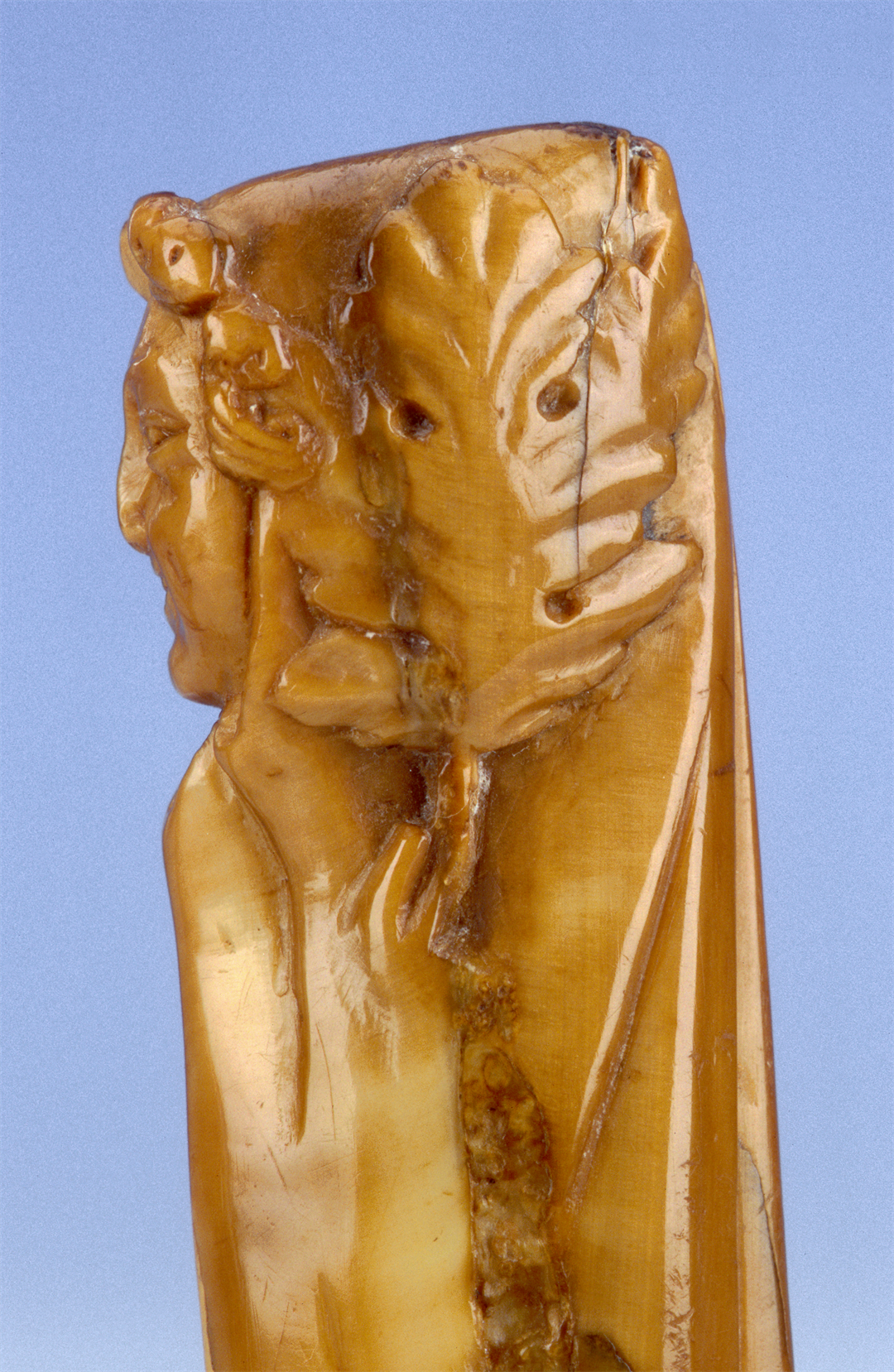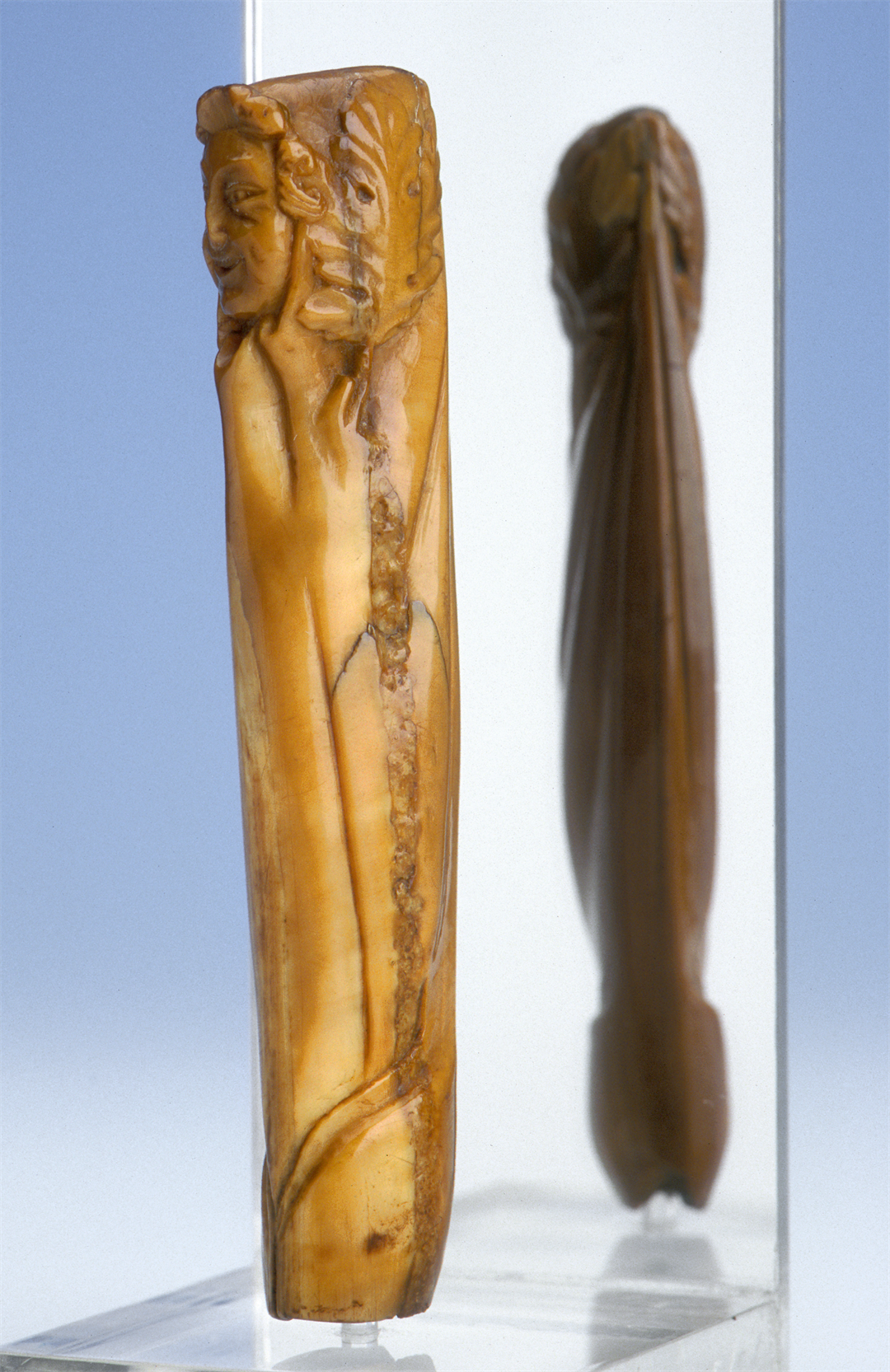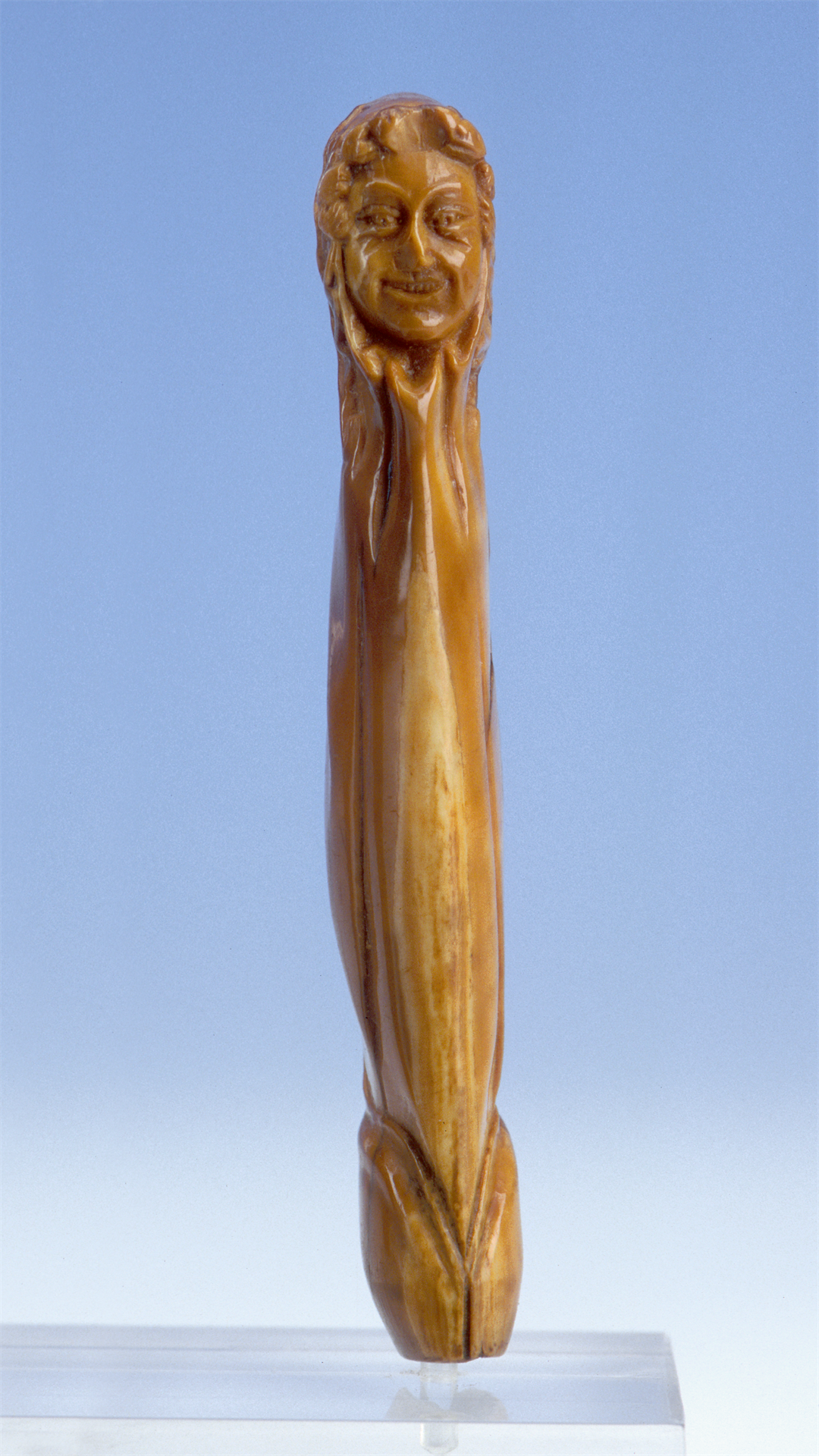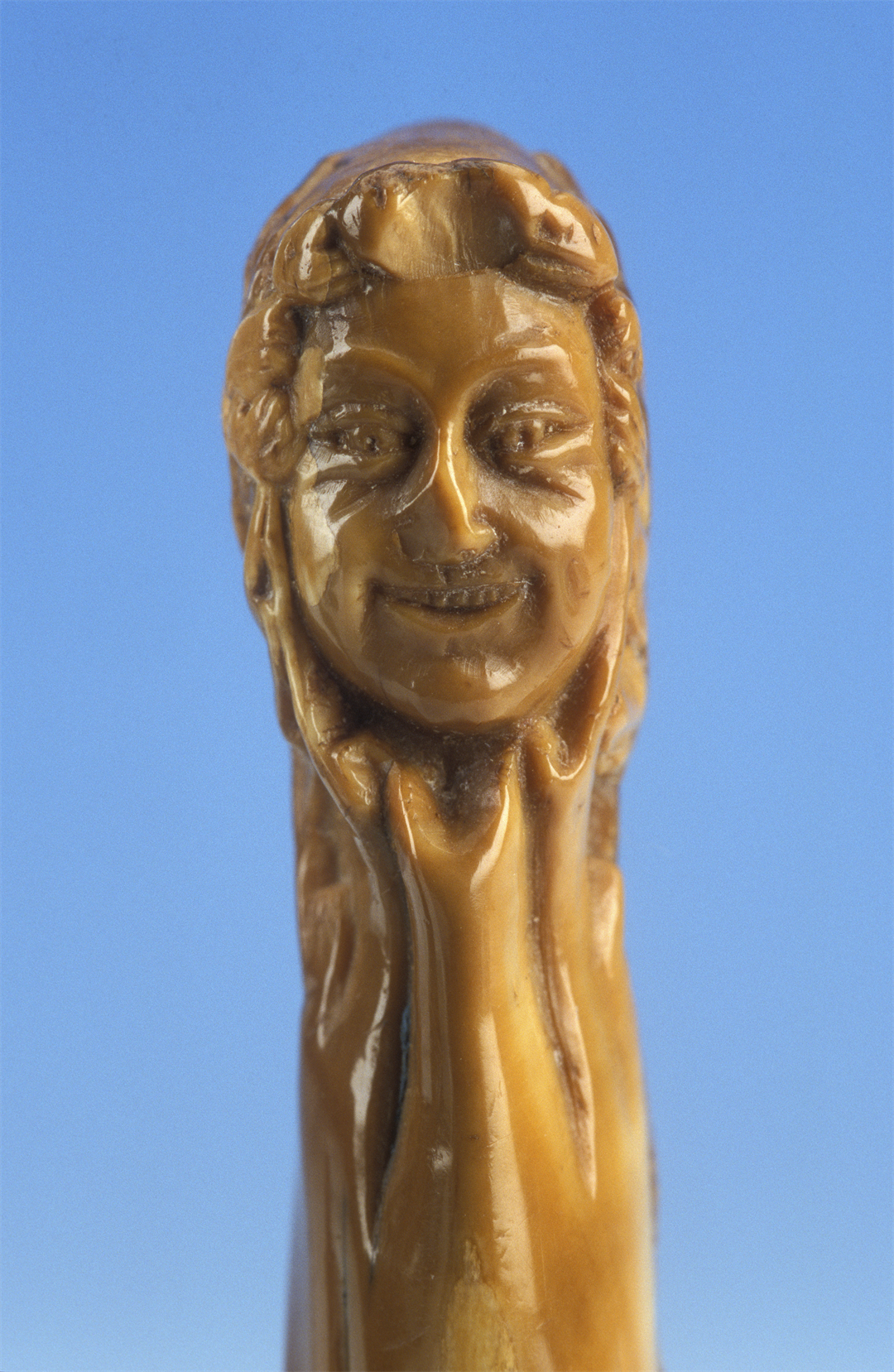Enter a search term above to search our website
Pages
News
Star Objects
This unique knife handle was found in 1977 during excavations on the High Street, Perth (in advance of the construction of Marks & Spencers store) and is arguably the most exciting of all the many objects found during that excavation. The handle is made of walrus ivory and can be dated to the 14th century. It shows a hooded face carved in fine detail (only slightly marred by damage to the nose) and with intricately carved leaves being held to either side of the hood. It probably represents someone enjoying May-time festivities. It is a further, fine indication of a thriving cultural life in medieval Perth.
The celebration of May often included the gathering of seasonal greenery. May festivities in Perth included an annual procession to a cave, known as the Dragon Hole, situated below Kinnoull Hill. The Church of Scotland tried to ban these celebrations in the late 16th century as they were seen as pagan and un-Christian.



